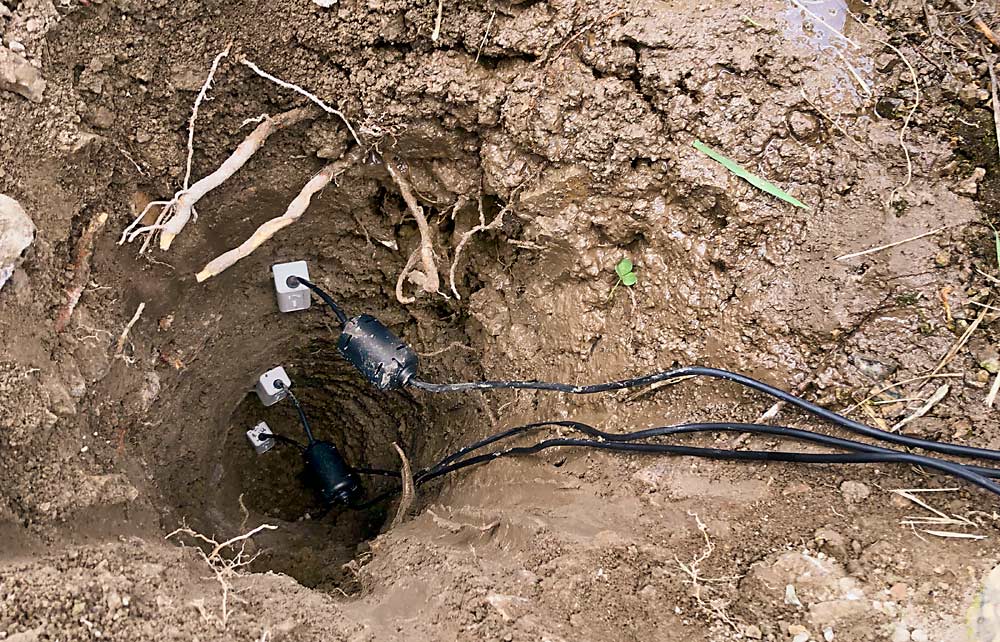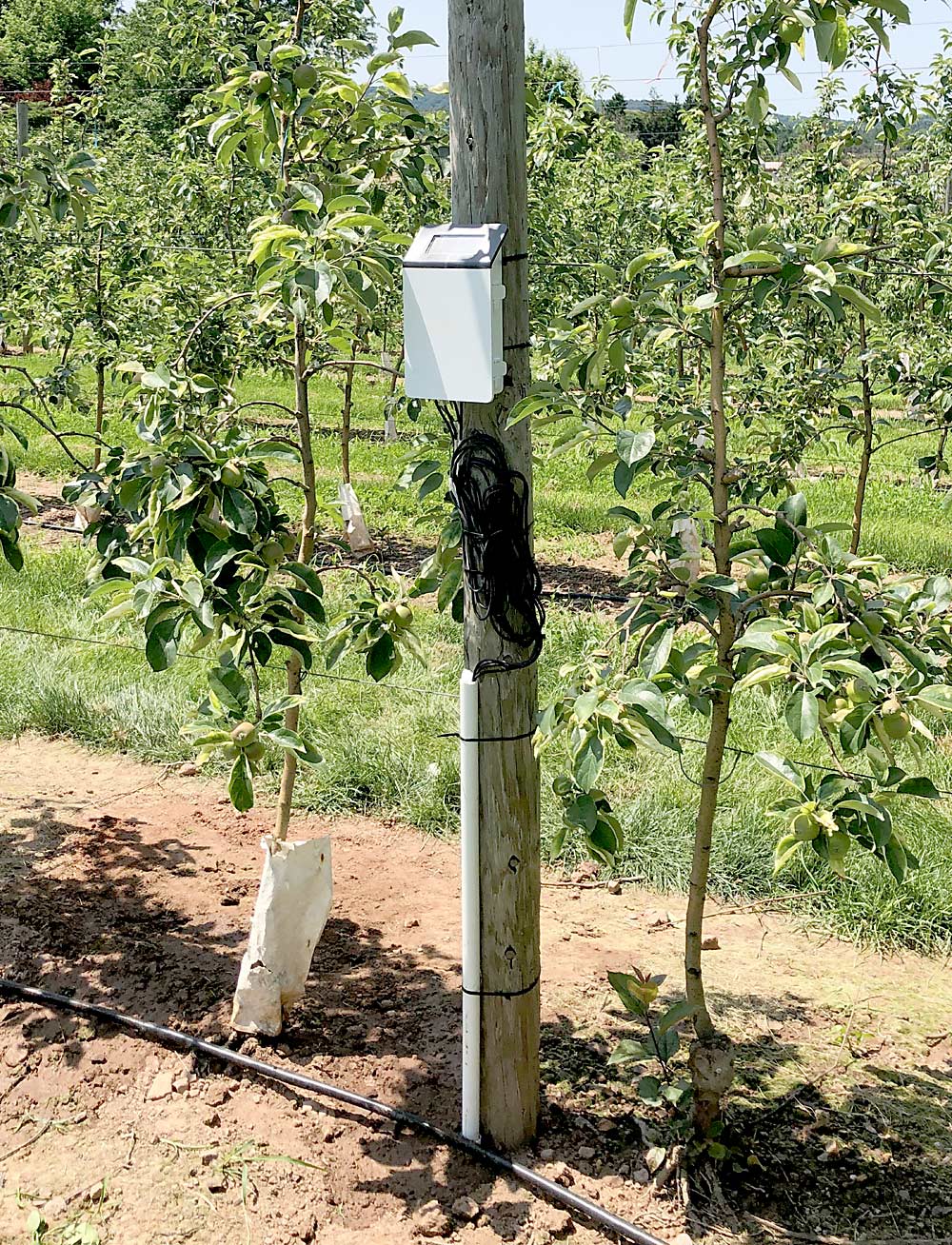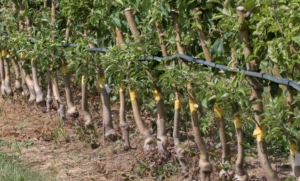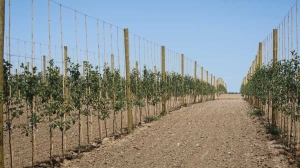
Like most fruit growers east of the Mississippi River, Bruce Hollabaugh doesn’t always need to irrigate his crops, but it sure helps with fruit quality and tree health — especially in dry years.
Watering trees is expensive, and Hollabaugh doesn’t always know exactly how much water they need. If there’s already adequate moisture in the soil, then activating the drip system at his Biglerville, Pennsylvania, orchard wastes resources. He would like to be able to quantify exactly how much water his trees need to remain healthy and finish with a good fruit crop.
“I don’t want my trees to get stressed for lack of water,” he said. “But I don’t want to burn gas to pump water on trees that don’t really need it.”
As chair of the State Horticultural Association of Pennsylvania’s research committee, Hollabaugh knows he’s not the only grower who could benefit from learning more about his soil moisture levels. That’s why SHAP agreed to provide funding for irrigation trials conducted by Penn State University assistant professor and agricultural engineer Long He.
He began conducting irrigation trials in Adams County orchards and tomato fields when he joined Penn State in 2018. He wants to understand how the “internet of things” — in this case a network of soil moisture sensors, data loggers and other equipment exchanging data via the internet — can help growers irrigate more efficiently.
At Hollabaugh Bros., He’s team installed sensors in a 1.5-acre Honeycrisp apple block and a 3-acre Harrow Sweet pear block. They used three TEROS 10 soil water content sensors and one TEROS 21 soil water potential sensor in each block, both products sold by Meter Group Inc. The TEROS 10 measures the amount of water in the soil, while the TEROS 21 measures the force plants need to pull water from the soil. The TEROS 10 sensors were installed at 1-, 2- and 3-foot depths, and the TEROS 21 was installed at a 2-foot depth. The sensors are connected to Meter Group’s ZL6 data logger, which records and relays their measurements to the cloud, He said.

When the soil moisture level reaches a certain threshold (which varies from field to field, depending on soil type), the irrigation operator manually turns on the water. Ultimately, He would like to see these modern irrigation systems operate remotely — the grower could check the data and turn on the water from his office, for example, or even automatically, where the grower wouldn’t have to worry about turning it on at all.
In other trials, He uses Watermark soil moisture sensors from Irrometer, a data logger/controller board setup he adapted from technology provided by irrigation tech company Vinduino, and data platforms provided by The Things Network and AllThingsTalk. He also uses thermal sensors to measure temperatures in the tree canopy.
Few Pennsylvania growers have adopted these technologies, partly because they’re so new and partly because of costs. But He has already discovered that irrigating with these tools can save water. It also has the potential to increase yields.
He’s trial results have already taught Hollabaugh that he’s been irrigating his trees too frequently, and his soil is a lot more diverse than he originally thought. The grower has a RainWise weather station on his farm that’s connected to Cornell University’s Network for Environment and Weather Applications. Before the Penn State irrigation trials, Hollabaugh used NEWA’s transpiration calculator to make irrigation decisions. Now, he blends NEWA data with insight from He’s soil sensors. Hollabaugh still mixes in a “fair amount of gut” — based on his knowledge of his orchard — when making those decisions, he said.
He plans one more season of field trials in commercial orchards. After that, the researcher will continue to work with growers to implement sensor-based irrigation systems. In the long run, he wants to help growers adopt automated systems. •
—by Matt Milkovich








Leave A Comment